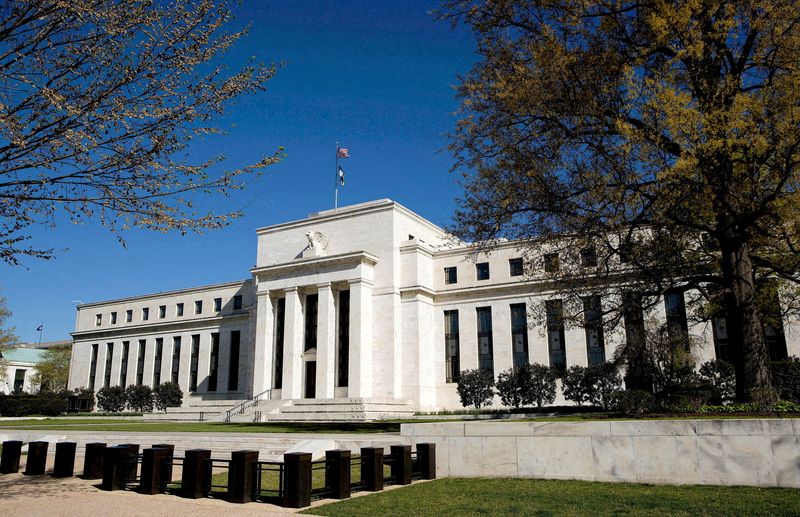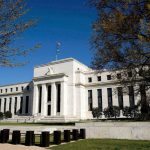WASHINGTON/LONDON (Reuters) – With key central banks now aligned in cutting interest rates a real-time experiment is underway in how much the global financial landscape has changed since the pandemic and in particular whether the easing cycle may be short-lived because of higher underlying rates.
The impact of the Federal Reserve last week joining a process already started at the European Central Bank, the Bank of England and elsewhere with a larger-than-anticipated half-point rate cut could be extensive – already credited by some analysts for clearing the way for the People’s Bank of China to unveil its largest stimulus since the pandemic with fewer concerns about how that might influence local currency values.
But how long and how far the global easing may continue remains unknown as policymakers explore whether the rates required to keep inflation in check and economies growing are higher now than the ultra-low ones common before the pandemic.
Officials in Washington, Frankfurt and London are skeptical they can specify that “neutral” rate of interest other than by seeing how economic conditions evolve as rates fall, a tricky exercise likely involving instinct and intuition as much as math and modeling.
They agree, however, it is likely higher than before, a conclusion that at some point will cause officials to proceed more cautiously toward further rate cuts.
Referring to the pre-pandemic years, when the Fed’s rate hovered near zero for years and Europe delved into the exotic world of negative rates, Fed Chair Jerome Powell said last week he felt that world is gone for good.
“That’s so far away now, my own sense is that we’re not going back to that,” Powell said. “It feels to me that the neutral rate is probably significantly higher than it was back then. How high is it? I just don’t think we know…We only know it by its works.”
Those “works” would include inflation at the 2% target that the major central banks all share, and an unemployment rate, wage growth, and economic growth all near the potential consistent with that pace of price increases.
Among major central banks only the Bank of Japan is not easing monetary policy to approach that point, but tightening after finally succeeding in lifting inflation.
For the Fed, in projections issued last week the median stopping point for rate cuts seen by officials was 2.9%, to be reached by the end of 2026. But individual projections were spread across a range from 2.4% to as high as 3.9%.
Fed Governor Michelle Bowman in particular argues the neutral rate is “much higher than it was” and the Fed therefore closer than suspected to its theoretical stopping point.
‘WORLD HAS CHANGED’
How data and the debate around it play out in coming months will be central to a global resetting of what it will cost to borrow to finance a home, buy a car or build a business. In the U.S., mortgage rates for a 30-year home loan were often around 3% in the decade before the pandemic and spiked to near 8% as the Fed tightened policy.
Those are already falling toward 6%, but the decline is unlikely to be anywhere near as steep as the rise. One recent Fed study suggested mortgage rates may not go below 5%.
So it may be around the world.
The ECB’s Governing Council doesn’t have a neutral rate estimate, but staff published a paper this year showing a real rate of around zero – or about 2% in nominal terms when adjusted for inflation – compared with a real rate of slightly below zero before the pandemic.
The BoE doesn’t publish a precise estimate for what it thinks neutral might be. But the bank’s most recent Market Participants Survey showed analysts saw it at 3.5%.
In August, after the BoE cut rates to 5.0% for the first time since 2020 from their 16-year high of 5.25%, BoE Governor Andrew Bailey, like Powell, said the level of low rates was likely over.
“It’s unlikely that we are going back to the world we were in between 2009, post the financial crisis, and the point at which we started raising rates,” Bailey said. “The reason for that is that world was really driven by very big shocks” that touched commodity and labor markets, shifted global supply and investment dynamics, and were shaped by fiscal initiatives that included a newly styled industrial policy in the U.S.
Those factors, along with demographic, productivity, and other underlying trends likely mean more intense price pressures and higher interest rates going forward, Jason Thomas, head of global research and investment for Carlyle, wrote in a recent analysis.

“Central banks do not set policy in a vacuum or under self-selected circumstances,” he said. “The world has changed since 2019 in ways likely to ensure that price pressures emerge before interest rates approach levels that prevailed during the pre-pandemic era.”
(This story has been corrected to clarify details regarding the euro zone’s neutral rate estimate in paragraph 15)
To read the full article, Click Here

